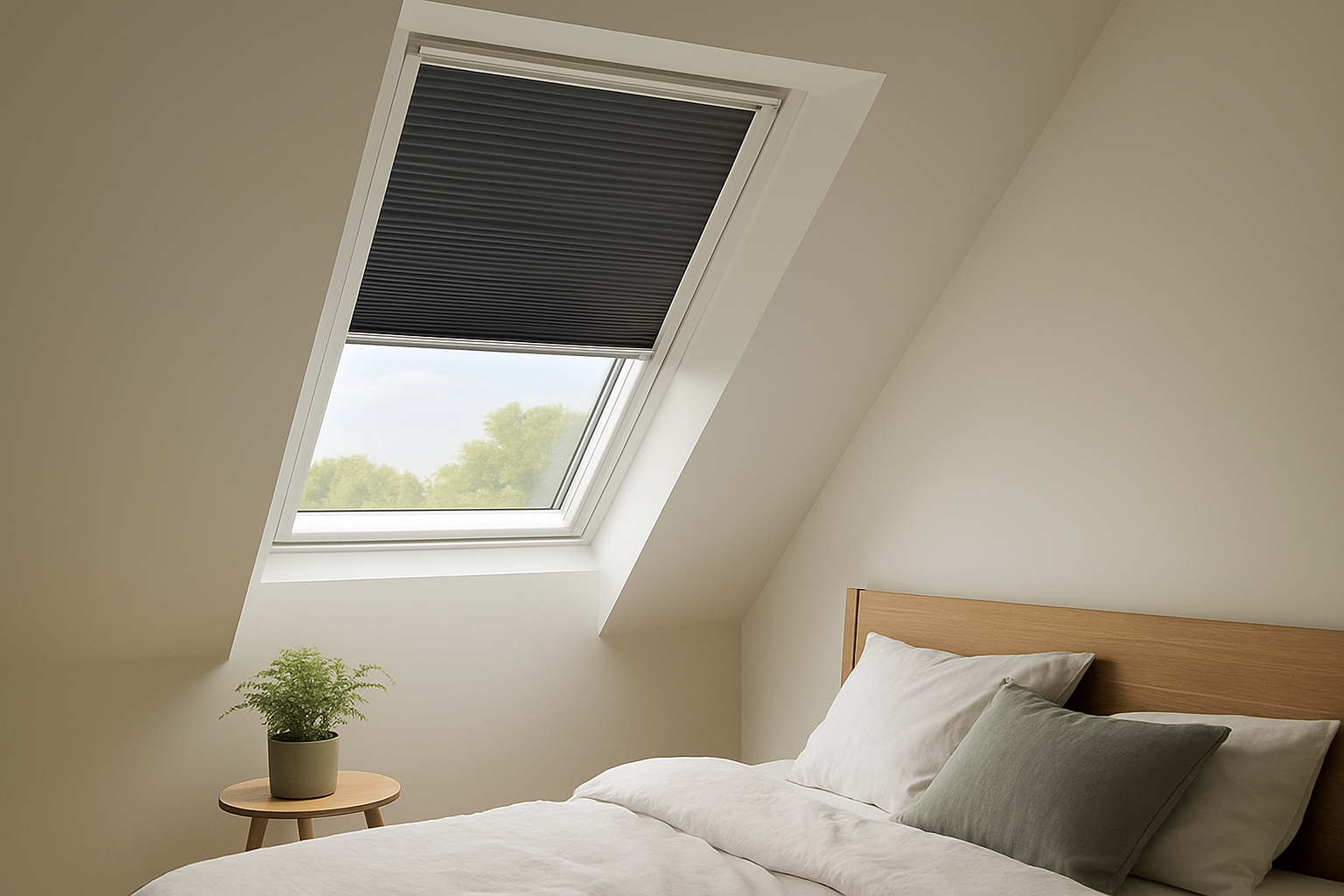Understanding the Role of Velux Blinds in Modern Interior Design
Velux blinds have become a key element in modern interior design, especially in rooms with roof windows or skylights. These blinds do more than control light — they define atmosphere, highlight architectural features, and add a polished finish to any space.
Velux blinds work seamlessly with Velux roof windows, offering custom coverage options ideal for loft conversions and attic bedrooms. By integrating functional shading with aesthetic appeal, these blinds support both comfort and visual harmony. Whether homeowners want a sleek, minimalistic look or a cosy, ambient setting, the right Velux blind can deliver impeccable results. This makes them highly recommended by interior designers for creating chic, ergonomically sound living environments.
The ease of installation and wide selection of styles and colours also make Velux blinds an attractive choice for UK homeowners. Their compatibility with other design elements — such as wooden finishes, pastel palettes, or industrial metal accents — gives them tremendous flexibility. When planning your next redesign or renovation, Velux blinds can play a defining role in pulling everything together simple yet stylishly.
Using Natural Light as a Design Asset
Natural light is a powerful tool in interior design. Velux blinds are the perfect solution for controlling how that light enters the room without blocking it entirely.
Velux blinds offer a unique opportunity to harness sunlight effectively. With options to diffuse, soften or completely block light, you can influence the atmosphere of a space at different times of the day. For example, blackout Velux blinds are perfect for bedrooms and cinema rooms, creating a restful or immersive environment. Meanwhile, translucent or light-filtering variants allow for warm daylight in studios or kitchens without the glare.
Interior designers often use Velux roof blinds to create zones in open spaces, leveraging natural shadows and brightness to add depth and distinction. This layering technique is especially useful in multifunctional spaces such as loft apartments, where the same room serves multiple purposes — from working to relaxing. These blinds enable precise light adjustment to complement each activity naturally.
Moreover, Velux blinds reduce reliance on artificial lighting, which not only supports sustainable design but also creates a more organic and comfortable space. When paired with complementary elements like [wooden venetian blinds](https://www.impressblinds.co.uk/wood-venetians.php) in adjacent sash windows, this can tie the entire lighting scheme together.
Choosing the Right Velux Blind Style for Your Room
Selecting the appropriate Velux blind depends on your room’s function and overall interior aesthetic. Velux offers a wide range of finishes and mechanisms tailored to specific needs.
For bedrooms, blackout Velux blinds remain the most popular due to their ability to block nearly all light. These are essential for quality sleep, especially during long summer days in the UK. Available in both manual and remote-control options, they’re often selected by those looking for convenience and comfort. Roman and pleated variations inject a soft texture into the room, enhancing a homely feel while offering effective privacy.
In kitchens and bathrooms, moisture resistance becomes the priority. For such settings, Velux blinds in moisture-proof fabrics are invaluable. They withstand humidity without warping or sagging, preserving both function and form. Designers pair these with minimalist colour palettes to keep spaces clean and sophisticated.
Children’s rooms, another key area, benefit from blinds with enhanced safety features. Velux caters to this market with child-safe designs and playful prints, introducing style and security simultaneously.
Where style is the central focus — such as in lounges or conservatories — daylight diffusing Velux blinds work beautifully. They soften the light while maintaining a visually airier feel. For best results, designers often match them with nearby [conservatory blinds](https://www.impressblinds.co.uk/conservatory-blinds.php), creating a cohesive and continuous flow across the home.
Velux Blinds and Colour Psychology
Choosing colours isn’t just about aesthetic appeal — it affects mood, energy, and how spaces are perceived. With Velux blinds, colour selection plays a crucial psychological role in interior design.
Neutral shades like ivory, grey, and beige offer timeless elegance, ideal for those seeking a serene and calming environment. These colours are often used in bedrooms and reading corners, balancing light control with peaceful visibility. When designers select these tones for Velux blinds, the goal is to amplify minimalism without overwhelming the visual space.
In contrast, bolder colours like navy blue, dark green, or charcoal grey are used strategically to introduce depth or create drama. These are ideal for modern lofts or offices, where a statement roof window can be a centrepiece. With the light naturally streaming in from above, darker blinds balance out the brightness and bring sophistication without needing additional decor.
Pastels and brighter shades — like blush, lavender, or sky blue — are perfect for nursery rooms or creative spaces. These hues introduce a gentle playfulness while still allowing comprehensive light control. Their reflective nature enhances overall luminosity, making tight attic spaces appear larger and more open.
Designers often consult the principles of colour psychology when suggesting Velux blinds, ensuring the blind complements wall colours, decor schemes, and flooring choices. This harmony in colour translates into emotional well-being, making homeowners feel connected and comfortable in their spaces daily.
Matching Velux Blinds with Other Window Treatments
Combining Velux blinds with other types of window coverings can create a layered look that enriches your room’s style and functionality. Whether you want to match or contrast elements, a coordinated approach can have a captivating effect.
Velux blinds pair beautifully with traditional vertical or roller blinds when used in open-plan areas or homes with multiple window types. Think of a loft space with both sloped skylights and balcony doors — blending a Velux blind with coordinating [roller blinds](https://www.impressblinds.co.uk/roller-blinds.php) conforms to the room’s overall logic while maintaining individual utility.
Layered treatments, where Velux blinds manage natural light from above and wall blinds deal with horizontal light sources, also support energy efficiency. The controlled combination retains warmth during winter and cool interiors in the summer, perfect for modern homes aiming for energy-conscious design.
When pairing designs, interior experts often recommend keeping to a consistent palette. For instance, a grey Velux blind with linen-finished roman or pleated blinds provides textural contrast while staying harmonious. Consider the type and tone of wood finishes, flooring and even upholstery, to ensure that the window treatments feel embedded in the overall room’s composition.
Homeowners are increasingly mixing made-to-measure Velux blinds with [perfect fit blinds](https://www.impressblinds.co.uk/perfect-fit-blinds.php) on smaller, individual window units. The seamless integration delivers uniform shading and a clean-lined design language, especially within contemporary homes.
Expert Tips for Longevity, Cleaning and Maintenance
Velux blinds are designed to last, but like any quality design element, proper care and maintenance are essential to preserve their function and aesthetic over time.
Cleaning frequency should depend on the room they’re installed in. For example, if your Velux blinds are in a kitchen or bathroom, steam and grime may accumulate faster, requiring more frequent upkeep. Use a soft cloth and a non-abrasive cleaner for standard fabric blinds. For moisture-resistant models, a simple wipe with vinegar and water maintains cleanliness without the risk of discolouration or warping.
To ensure the blinds continue working smoothly, check the tracks and mechanism regularly. Dust and debris can build up in the runners, especially for manual blinds, causing them to stick or function inconsistently. A light vacuum or compressed air treatment can eliminate such issues quickly.
For remote-controlled or electric Velux blinds, check the battery or power connection periodically. Be mindful of any lag in response time, which might indicate a need for recalibration or software update. Most modern electric blinds work smoothly, but occasional tech support may optimise longevity.
Finally, avoid forcefully pulling or yanking them. Whether you’ve chosen blackout or translucent variants, gentle handling goes a long way in extending their lifespan. Evaluate them seasonally and refer to the manufacturer’s handbook for any specific cleaning products or care recommendations tailored to your particular style.
When to Consider Professional Design Consultation
There may come a point in your design journey when expert advice makes all the difference. Velux blinds, because of their architectural alignment with roof windows, often benefit from being chosen with a designer’s input.
Consulting a professional becomes even more relevant when integrating Velux blinds into a wider room renovation, especially in unusual layouts like lofts, attic bathrooms, or open-plan conversions. Designers are well-versed in aligning blind types with ceiling pitch, light orientation, and room purpose. They’ll recommend the best model and material for your exact needs, whether you need complete room-darkening in a bedroom or a light-filtering ambiance in a lounge.
Moreover, professionals are experienced in planning continuity across multiple spaces. If you already have vertical or roman blinds installed in adjoining rooms, bringing in a design expert ensures Velux options pair well and look consistent. Rather than risking a disjointed appearance, professional suggestions allow for more cohesive, polished outcomes.
Sometimes it’s not about what blind to choose, but how to incorporate it artistically within a space. That’s where designers bring true value — offering decorative layering strategies, enhancing visual flow, and ensuring all elements, including furniture, paint, and tiling,



